What Makes a Successful RTO Initiative?
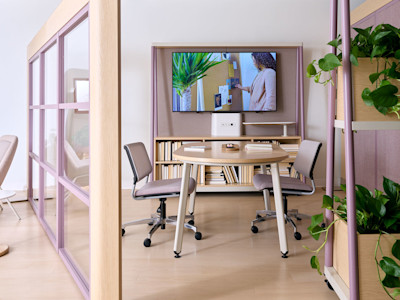
It has been years since the COVID-19 pandemic. Businesses shut down. Work was put on hold. The way we viewed the workplace changed. Five years later, we’re still feeling the impact. Companies discovered what was important, ways they could optimize workflow, and new approaches to the everyday. However, it didn’t have a positive impact on everyone. Many companies shut down for good. Others are still trying to re-establish themselves. It’s no surprise that companies are doing what they can to stay afloat. Maintaining employee satisfaction and navigating return-to-office initiatives has become a challenge. It’s a challenge that many companies have faced. And many have struggled to do it successfully.
There have been many patches and temporary fixes to adapt to remote and hybrid work. However, in the long run, companies want their employees back in the office. But how have companies approached this issue? While many employees have threatened to quit if should they return, others have actually followed through with it. As a result, the modern office has been forced to keep up with the times. A new approach to office design has taken center stage. But how does office design entice employees to come back to the office?
Why Does RTO Success Depend on Office Design?
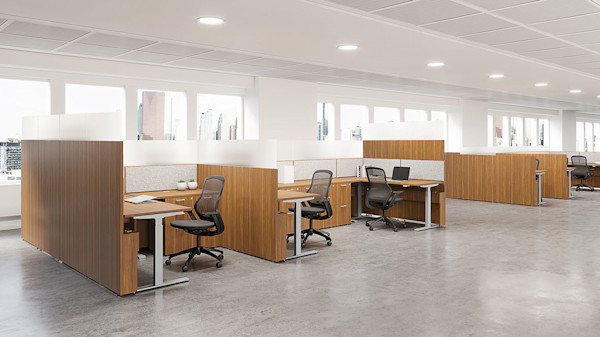
Provide employees with ample workspace in the office
For years, many employees have had the luxury of working remotely. They haven’t had to commute. They’ve had complete control over their environment. Most importantly, they worked in a space tailored to their specific needs. Most of them proved themselves to be productive and successful. However, there are some aspects of business that are hard to replicate out of the office.
In-person connection was virtually impossible. Team building was difficult. Because of this, employees had to change the way they communicated. Many were still able to work efficiently. However, employers found value in workers returning to the office. Many of these RTO initiatives have led to hybrid work. Staggered attendance, in-office work as needed, and flexible workplaces are practices adopted by many. Even though this approach has become the cornerstone of many initiatives, many companies want employees to return full-time. But what cost does this come at?
Employees who thrive in a remote or hybrid environment might find it difficult to return just for connection or to make certain aspects of their job a little easier. The work home they created has to be left behind. Now, they have to find their home in the office again and the employer is becoming more responsible for giving employees what they need.
The freedom that remote work affords employees is hard to find on four walls. Workers can’t up and leave to take a walk through their neighborhood. It’s difficult to spend as much time with family. And the time spent commuting is valuable time that’s hard to get back. That’s why it’s important to design an office that makes all of the inconveniences worth it.
Finding a Home in the Office
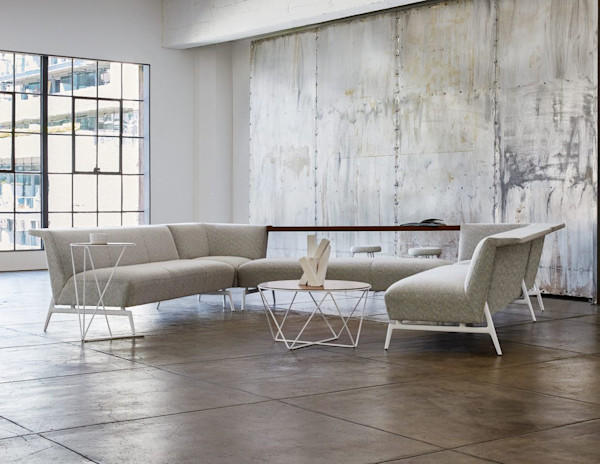
Learn more about creating comfortable spaces for employees
The office is much different from when employees left five years ago. There has been a shift to employee focused design rather than just work-focused. Employee preferences have been put at the forefront of design. Companies have been forced to recreate home offices. This might include amenities such as recreation rooms, breakrooms, or even cafes or in office dining. Creating an office that employees want to be in is the first step of a successful RTO initiative.
An article from Runn discusses the importance of employee preferences in the workplace. The article highlights the main areas of employee preferences and their importance. It’s no surprise that many of the key areas are directly or subsequently affected by RTO initiatives. The two biggest factors of employee preference are location and working hours.
Last year, the average commute time in the U.S. was close to 30 minutes. This means on average, the average commuter spent almost an hour a day in the car and around 5 hours a week. This extended time spent in the car takes away from family or personal time. If the office is less than desirable, it’s hard to justify these commute times. Making it worth returning to work means designing a space that makes it worth spending that much time in the car.
The other major area of employee preference is working hours. Non-traditional attendance, variable working hours, and fully flexible working hours are more attractive to employees. Creating a successful RTO initiative means giving a little more than you might like. To learn more about some of the key employee preferences in the office, check out the full article from Runn.
Choosing the Right Furniture for an RTO Initiative
If you want employees to return to work, you have to give them a reason to come back to the office. But how do you do that when they’ve learned exactly what works for them? There are many ways to entice employees to come back to the office. However, the allure of recreation areas, cafes, and dining areas might eventually wear off. It’s the tools that help employees complete tasks that have the biggest impacts.
3 Ways Furniture Helps with a Successful RTO Initiative
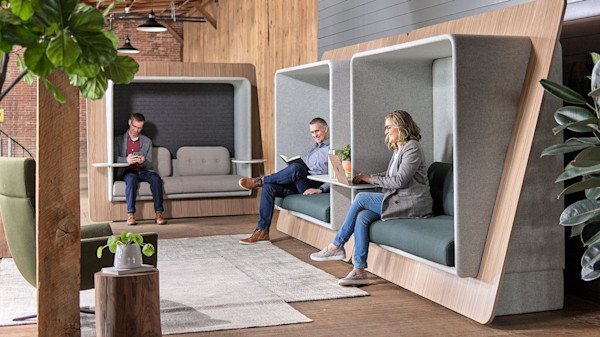
Build functional spaces for your employees
Efficiency
At the end of the day, employees want to come in, do their jobs, and go home. The office plays a large part in how seamless this process is. Coming to work shouldn’t be a hassle. If you employ a hybrid model, it’s important to have ample space when workers are in. If you’re expecting your employees to hold traditional hours, they need their own designated space.
StrongProject’s modern cubicles allow your employees to work efficiently during focused work. However, they’re not detached or secluded from the rest of the team. This allows them to quickly adapt to more collaborative work. Modern cubicles and workstations give employees the chance to shift their working styles as their work shifts as well.
Collaboration
One of the biggest arguments for RTO initiatives is the in-person connection. Working remotely makes in-person communication virtually impossible. An article from Nectar showcases the importance of connection in the office. Nectar has reported that more than 75% of employees work with a close friend. 85% of employees connect with people outside of their department. Almost 70% of employees wish they had deeper connections at work. Most importantly, over 77% think connection is an important part of creating a great company culture.
Bringing people back to the office doesn’t automatically create that connection. It’s something that should be fostered. By including collaborative furniture in the office and more common spaces, companies can help employees satisfy that connection. This connection is something that’s missing from remote work. Lounge furniture gives employees a designated space. Employee booths give workers a quiet and more intimate setting to work together. Adaptable spaces provide workers with the option to have a strategic blend of both. Everyone wants connection. Employees have the need to connect with others. Employers usually want a cohesive workforce. A collaborative approach to design ensures employers are getting the most out of their employees while accommodating such important needs.
Acoustic Furniture
More than likely, one thing that workers didn’t have to deal with working from home, was distraction. Unless we’re talking about kids and other family members. Regardless, they didn’t have coworkers stop by their office. They didn’t get caught up talking to others walking down the hall. There was no need to address noise or visual distractions from coworkers. A distraction-free space is one thing that is hard to leave.
Employees shouldn’t have to leave a quiet home office and return to a loud, distracting office. Including acoustic furniture in your RTO initiative allows employees to continue their work without having to sacrifice focus. Acoustic booths, noise-dampening fabrics, and sound-absorbing panels help limit the distractions that come with working alongside others in the office.
Developing a Successful RTO Initiative
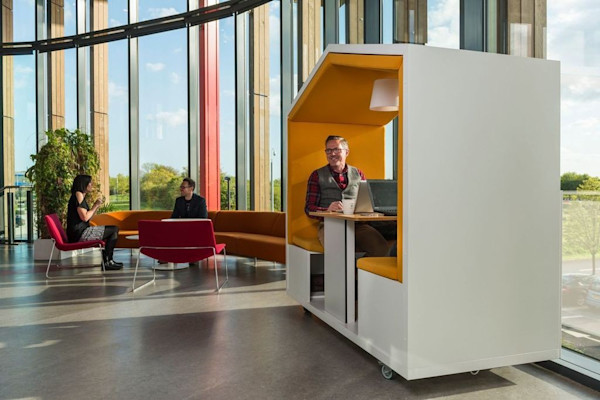
Include acoustic furniture in your RTO initiat
Is it time for your employees to return to work? Do they have the tools they need for a seamless transition? Will you be able to successfully bring employees back? There are many factors that contribute to the success of an RTO initiative. The scope of work. The company culture. How employees feel about their team and those they’re around on a daily basis.
It’s a company’s responsibility to give employees what they need to succeed. Designing an office that meets and exceeds employee expectations is the first step in creating a successful RTO. Remember, employees are leaving the comfort of their own homes. They’re leaving their ideal office. Making it worth it to them will help make it worth it for you and your company.
Contact us today to learn how we can help with your RTO initiative today!
Want to learn more about successful office designs? Check out these related topics:
